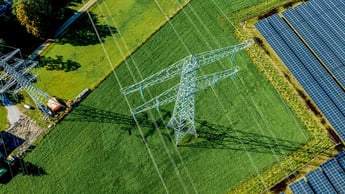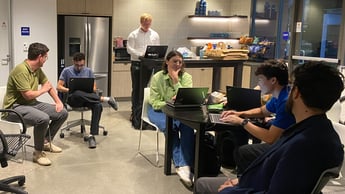Dutch horticulture: regaining market leadership by using data
The lead of Dutch horticulture has been declining worldwide due to the emergence of new horticultural countries that exploit data-driven solutions and applications. The (high-tech) knowledge about data, technology, and new innovations has been present in the Netherlands for years but is only now beginning to find its way to the agriculture sector.
Agri technology is taking on increasingly larger forms in all countries. New technologies, such as the Internet of Plants, Deep Learning, and 5G networks make glass greenhouses, agriculture, and horticulture high tech and offer insights and applications that until recently seemed impossible.
The Netherlands is now taking back its lead and is investing heavily in new possibilities: from autonomous sorting solutions to the digital mapping of plots, plants, animal behavior, diseases, and pests. In addition, quality improvements during and after the harvest contribute to solutions for known social challenges: the availability of sufficient (qualified) labor, product quality, and the environment.
A good example is the autonomous classification and sorting of (ab)normality in tomato seedlings via image recognition. By labeling a limited set of standardized photos of tomato plants (classified as normal or abnormal), a model was trained using machine learning to score and sort batches of seedlings - fully automated and at a high speed. Using this model, tomato batches become more uniform, the quality increases, and working hours are saved.
As a bonus, classified data can also be used for plant breeding: growers can work faster and focus more on their breeding program. Also, other crops can be sorted quickly in uniform batches, but there are countless other applications. However, the applications are not just limited to growing and breeding but can also be used for exporting fruits; for example, mangos. The same type of machine learning model that works with images from scanners can be used to determine the stage of ripening. This determines which part of the world mangos can be exported to so that they are at the best ripening stage when in-store.
Linking data collections
Within horticulture companies, a huge amount of data is collected. Next to harvests data, water consumption, data related to CO2, and temperatures, the sorting computer also generates data about every product that leaves the greenhouse. Good examples are the spraying schedules, resource usage, logs of who executed which harvest and much more.
All this data is usually company-specific and is only used for the purpose for which it was collected. But what if we link, or improve, these data streams? Or do benchmarking with colleagues? Suddenly, a lot more is possible: because if you know who has carried out which harvest and when, and you compare this with the quality delivered (from the neighbor), you will gain insight into the possibilities of obtaining a comparable or better yield with fewer resources.
It doesn’t stop here. By approaching cultivation-specific challenges from a data perspective, new solutions emerge where none before were present. Existing sensors may provide more information than what is already being collected, and new sensors may collect information that provides much more detailed insight into processes. All this data can be fragmented, labeled, combined and modeled to bring forth new conclusions. Consider, for example, multi-spectral photos that, with the help of AI, provides insight into the maturity of crops. These insights contribute to the prediction of the next harvests.
Only the beginning of digital transformation of the agri sector
The demand for such applications will only increase in the coming years. We are already seeing business questions that seemed unthinkable until only recently. On the basis of (real-time) data, sensor or satellite data, images are used to determine the optimal crop harvest times. Based on GPS and local sensors, plant-specific actions are ‘prescribed’ by the system, without direct intervention from the grower.
The grower profession, however, will not disappear but their role is changing; understanding automation and data usage becomes a minimum requirement for every grower, producer, and employee. Machines will help with the right cultivation recipe and with decision-making (partly- or fully-autonomous). They will replace human labor and will enable possibilities that haven’t been used until now.
Although a lot of research still needs to be done and investments in new technologies are needed, current data sets are a good starting point. Smarter use of data that is already being collected is often an eye-opener and can make new applications visible. A nice and easy first step toward digital transformation.





